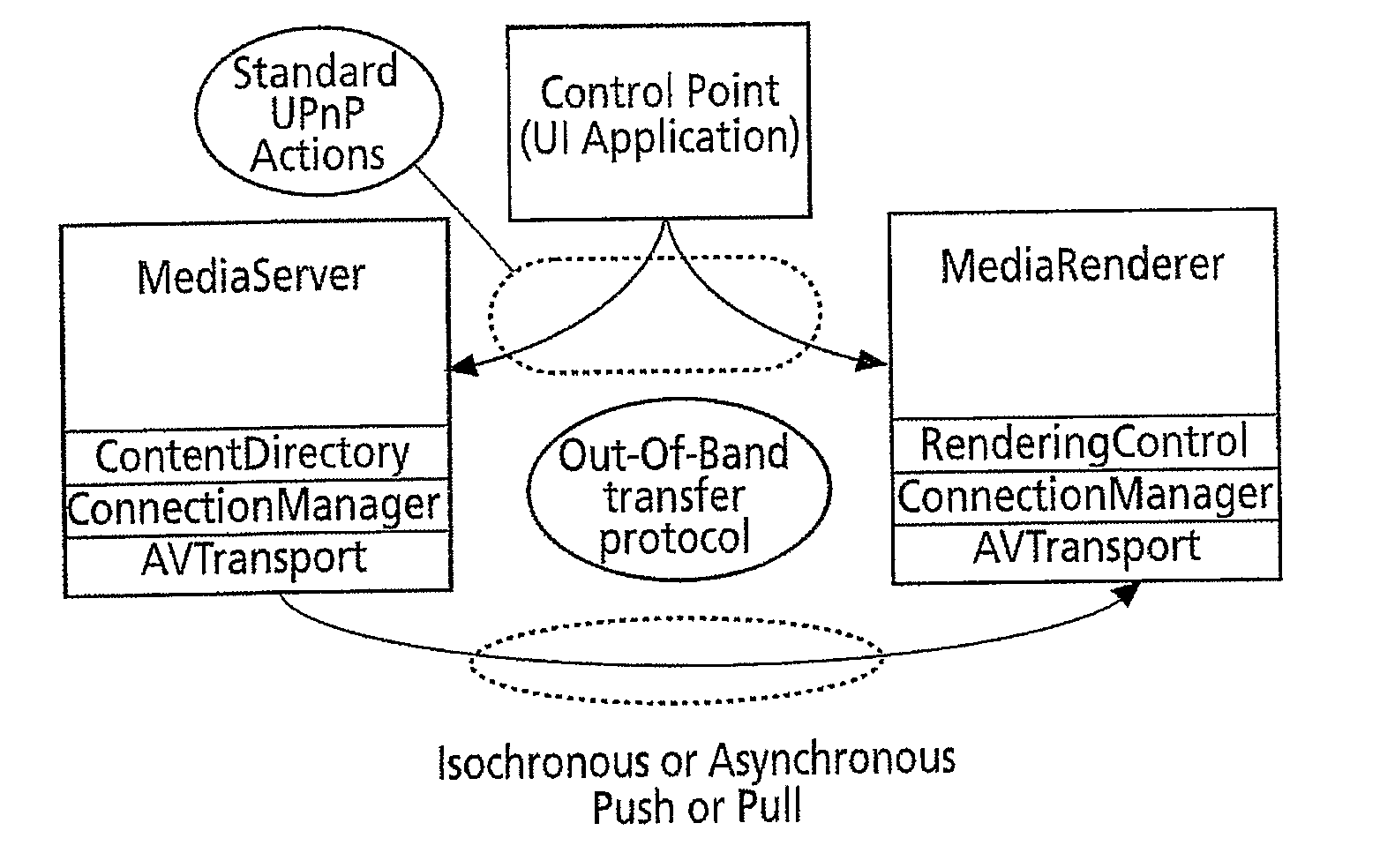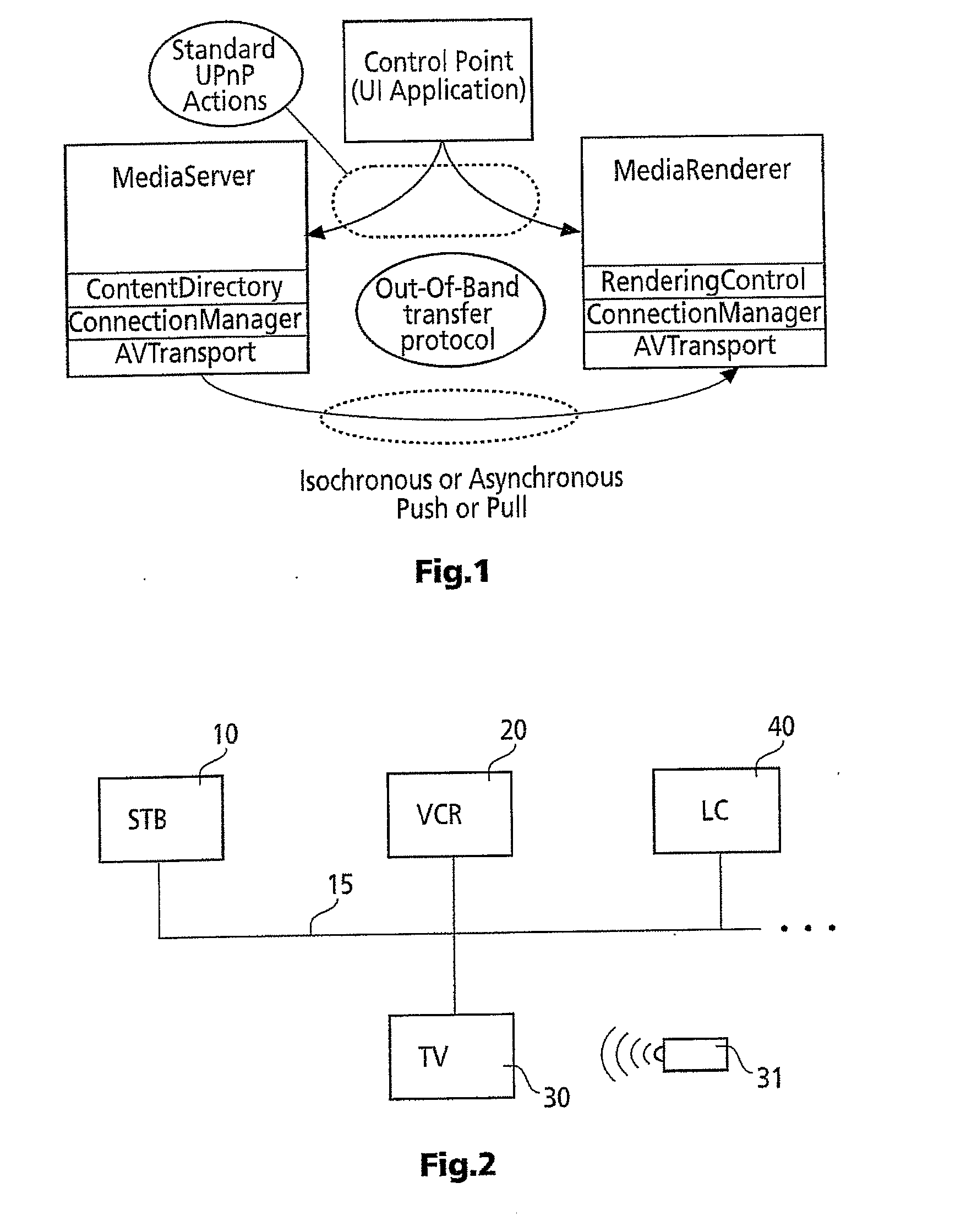Method for Controlling a Device in a Network of Distributed Stations, and Network Station
a technology of distributed stations and control points, applied in the direction of data switching networks, instruments, selective content distribution, etc., can solve the problems of not being able to completely adopt the controlpoint functionalities of java applets, the bottom layer of the osi/iso reference model for data communication is not specified in the upnp system, and the programming language java does not support tcp/ip-based communication with devices
- Summary
- Abstract
- Description
- Claims
- Application Information
AI Technical Summary
Benefits of technology
Problems solved by technology
Method used
Image
Examples
Embodiment Construction
[0024] Based on the UPnP standard's AV specification cited above, AV connections can be set up between two devices in a home network. In this case, the UPnP AV specification distinguishes between three different station types. First, a “MediaServer”. That station on an AV connection which is intended to serve as the data source is assigned to the device type MediaServer in line with the UPnP AV specification. Secondly, there is the device type MediaRenderer. This type is assigned to the device which has been selected as the data sink for the AV connection. In addition, there is also the device type ControlPoint. This device type is regularly assigned to the device type on which the control menus are displayed. Normally, this is therefore a device which is equipped with a display. As an example, the TV set in a home network is mentioned. Other examples are a personal computer which is integrated in the home network or a universal remote control with a display, which is likewise integ...
PUM
 Login to View More
Login to View More Abstract
Description
Claims
Application Information
 Login to View More
Login to View More - R&D
- Intellectual Property
- Life Sciences
- Materials
- Tech Scout
- Unparalleled Data Quality
- Higher Quality Content
- 60% Fewer Hallucinations
Browse by: Latest US Patents, China's latest patents, Technical Efficacy Thesaurus, Application Domain, Technology Topic, Popular Technical Reports.
© 2025 PatSnap. All rights reserved.Legal|Privacy policy|Modern Slavery Act Transparency Statement|Sitemap|About US| Contact US: help@patsnap.com



